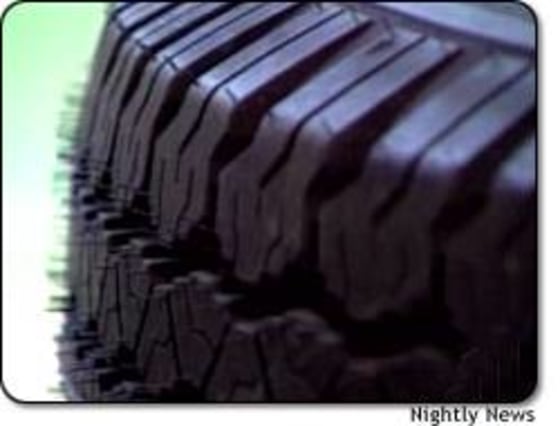Should tires be assigned a shelf life, like groceries, milk or eggs? A safety research group says aging tires develop cracks or weaken when they sit around unused.
Tire makers in Britain have just issued a warning to consumers. Replace tires that are more than ten years old, even if the tread’s not worn. And for a tire that hasn’t been used, like a spare, replace it after six years.
Reviewing U.S. lawsuits, the research group says that many accidents involved old tires. According to strategic safety expert Sean Kane, “we’ve been able to document in a very short period of time at least 20 cases involving serious injuries and fatalities in the United States, and we’ve only scratched the surface of this issue here.”
The tire that blew on Bill Cartus’ antique car wasn’t worn at all, but it was 11-years old. “Somehow we hit something and the last thing I remember is that we were spinning through the air two or three times. I think there were some other eyewitnesses that could tell how many, and the next thing I remember is waking up in the car and the top was gone,” Cartus said. “No one has ever told me, well, you shouldn’t drive on those because they are old. They look great.”
Industry: Shelf life not the answer
But the U.S. tire industry says a shelf life is not the answer. Donald Shea of the Rubber Manufacturers Association said: “What it is is a complex series of events that can make a tire deteriorate. One, is the amount of mileage; two is the abuse it takes on the road; third and perhaps most important is the maintenance that is given or not given to the tire. If the public gets the impression that they could continue to use a tire until that use by date that could send clearly the wrong message.”
When the NHTSA proposed an upgrade to new tire standards it also proposed an aging standard. That was deferred for two years because no one could agree on a reliable test that could artificially age a tire. The NHTSA is in the process of determining which test is best and hope to have research done by next summer.
Watch the DOT code
For now, to find a tire’s age, check its DOT code — but that’s not easy. At the very end are three numbers, for instance “414,” meaning the tire was made the 41st week of the year 1994.
To find a tire’s age, check its long DOT code, found on the side of the tire. At the very end are three numbers which indicate the week and year the tire was made, for example a DOT number ending with 414 means the tire was made the 41st week of the year 1994. Complicated!
But Bill Cartus, for one, says he’ll be checking now: “I buy milk; I look for the latest date. When I go buy eggs, I look for the latest date. On my next set of tires, I am going to be looking for that date.”
But some believe that, like groceries, tire dates ought to be a lot easier to find.
NBC News producer Jay Blackman assisted with this story.
